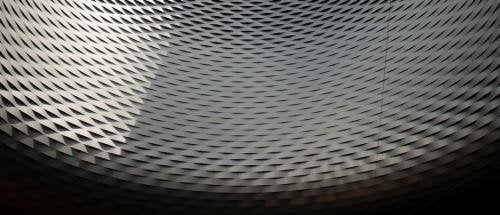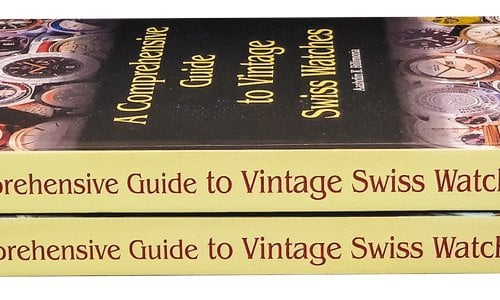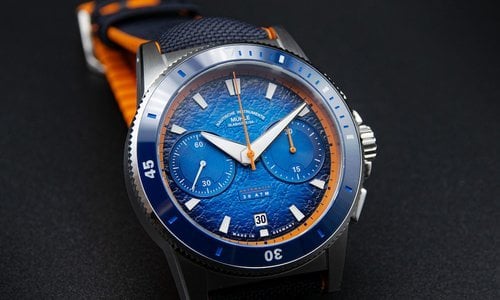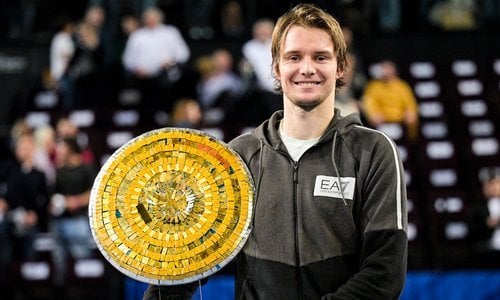The dignity of Seiko
At BaselWorld, Seiko gave its ritual press conference under a double and contradictory sign: the brand is celebrating its 130th anniversary this year and had therefore designed a program of products for the occasion, but the tsunami and nuclear catastrophe that followed were on everyone’s mind. It was a very dignified and very subdued Shinji Hattori who opened the conference. He stated that Seiko had not suffered human losses and he expressed thanks for the enormous gesture of support and solidarity offered by the watch community for the Japanese.
As a reminder, Hattori is the descendant of Kintaro Hattori, his great grandfather who, in 1881, opened the workshop that would become the base of the current Seiko empire. (Besides Seiko Watches and its other brands, Seiko also includes Seiko Epson, Seiko Instruments, Seiko Optical Products, Seiko Precision, and Wako, the famous department store in Tokyo, destined to become the immense flagship of the corporation.)
We certainly would have preferred to see our Japanese friends celebrate their 130th anniversary under better conditions. Even though the material losses were relative, the earthquake and the catastrophe are weighing heavily on the Japanese economic environment as a whole, on an industrial fabric where the ‘just in time’ concept was born. Problems of deliveries and logistics are compounded with an expected weakness in the domestic market for luxury products. But Seiko has huge resources. And just as a reminder, it is a fully, 100 per cent, integrated global manufacture. In fact, Seiko makes everything in house.
To give you an idea, Seiko prepared, for its 130th anniversary, a complete collection representing the ensemble of the technologies that it masters: mechanical, Spring Drive, Kinetic, and quartz.
Let’s begin then with the jewel of the season, the Credor Spring Drive Minute Repeater, produced in only three pieces this year, with a price tag of around US$ 400,000. This has been anticipated since one of the great qualities of the Spring Drive technology is its very particular silence—a silence conducive therefore to welcome the subtle chime inspired by the traditional wind bells of the esteemed company, Myochin, created 850 years ago: ‘The authentic chime of Japan’. The ‘governor’ that drives the activation of the repeater is also silent, functioning thanks to the viscosity of the air (as Seiko had already experimented with the Spring Drive Sonnerie of 2006). The hammers act on two gongs, producing three distinct sounds. The movement itself is well protected by an interior case. The bells are fixed to the exterior of this interior case, thus producing a better sound. But how, you ask, can the interior hammers strike the exterior bells? They do not directly strike the bell but act via the intermediary of a small mobile piece that, pushed by the hammer, moves to strike the bell itself.
The realization of this piece, with its affirmed ‘Japanese’ character, was entrusted to Micro Artist Studio, an ‘elite unit’ composed of a handful of highly talented watchmakers (who work under the imposing protection of Philippe Dufour, whose photograph looks down upon them: he trained them in the most advanced subtleties of chamfering). This ‘Japaneseness’ is expressed quite differently in the Ananta collection, whose forms, especially the horns, are crafted according to Katana, the traditional art of forging and polishing steel blades. Seiko has introduced its first automatic diver’s chronograph, equipped with the Calibre 8R39. (Seiko was the first brand to launch, in 1969, an automatic column-wheel chronograph with vertical clutch, followed closely by the Swiss). Specially developed for diving, it is solid, anti-magnetic, protected by three clamps rather than two, and operated thanks to a new balance spring laminated by Seiko in a proprietary alloy, the SPRON 610.
Another sign of ‘Japaneseness’, with a concern to maximally increasing readability, is that each dial of this diver’s watch is individually hand made by a renowned master lacquer craftsman, capable of attaining a particular deep black, called ‘Shikaku’, which is a totally pure black. This Ananta automatic diver’s chronograph will be issued in only 600 pieces for the entire world.
Another piece of note, a directly commemorative piece, is the re-edition of the first Grande Seiko of 1960, equipped with a splendid new manual-winding movement, the Calibre 9S64, also equipped with an anti-magnetic and resistant balance spring in the SPRON610 alloy. With a precision of -3 to +5 seconds per day, this movement features a power reserve of three days thanks to a new and finer spring, also made in a proprietary alloy (SPRON510). This vintage ‘collector’ is available in a limited edition of 130 pieces in a gold or platinum case, and a series of 1300 watches in a steel case.
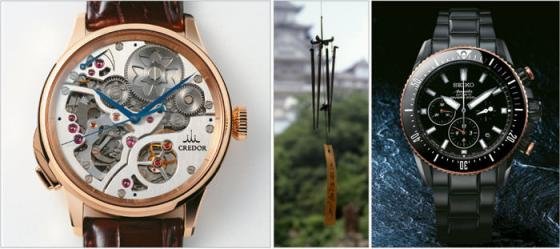 CREDOR SPRING DRIVE MINUTE REPEATER and ANANTA AUTOMATIC DIVER’S CHRONOGRAPH by Seiko
CREDOR SPRING DRIVE MINUTE REPEATER and ANANTA AUTOMATIC DIVER’S CHRONOGRAPH by Seiko
Swatch Plaza
It is impossible, totally impossible, to balance the mass of brands and activities that proliferated in every direction at BaselWorld. Large and small were mixed up together, so why make a distinction? We are sometimes therefore forced to pass quickly over some large brands to spend more time talking about rather small ones. Whatever the case, there is, among the very large, however, the inescapable
Swatch Group
. (Inescapable in both figurative and literal terms since the Swatch Plaza occupies an enormous space in Hall 1.0.) This is the first BaselWorld that the familiar and recognizable figure of Nicholas Hayek was not seen at the Plaza. Yet, while he was absent physically, his heritage was certainly present and even very symbolically nearby at Breguet, his favourite brand.
This year, Breguet presented the most interesting new models of the group in the Haute Horlogerie sector. In top position was the Classique Hora Mundi. Three versions of the dials each represented one part of the world, one ‘share of the market’—the American continent, the European and African continents combined, and Asia and Oceania. The innovation of the Hora Mundi lies in the display of the two time zones with an instantaneous jump from one to the other. It additionally features the synchronization of the date, displayed by a moving disc (letting appear the day, its night before, and its tomorrow), operated by an original system called ‘date follower’. A small retrograde hand ending in a circle encloses the day, follows it, and jumps instantaneously to the following at midnight.
The Hora Mundi function allows the wearer to pre-select two cities among the 24 shown and to then pass, at will, from one time zone to another. The base of this movement 5717 is the calibre 777, with a silicon escapement, to which another plate has been added. At the centre of the dial, a globe of the earth has been stamped, hand-guilloched, and hand-lacquered, with a day/night indication in lapis lazuli dotted with pyrite stars, a sun in yellow gold, and a moon in rhodium-plated yellow gold.
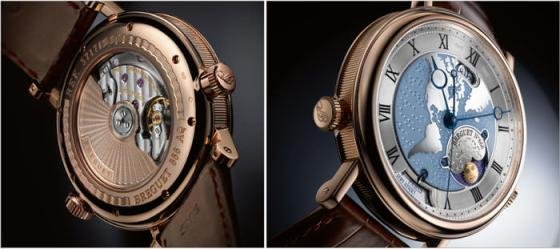 HORA MUNDI by Breguet
HORA MUNDI by Breguet
At Omega, the major attraction was the launch of the new Co-Axial 9300/9301 calibre, the first of this type of escapement to incorporate a column-wheel chronograph function. Equipped with a silicon balance spring, it allows the display, on the same counter at 3 o’clock, of the chronographic 12-hour and 60-minute functions, thus providing a very intuitive reading of the timings. For its launch, this interesting movement is found in the new Speedmaster.
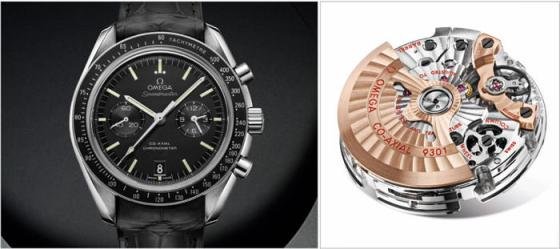 SPEEDMASTER, CALIBRE 9301 by Omega
SPEEDMASTER, CALIBRE 9301 by Omega
Ceramic wars
At the moment when Chanel made its global launch with its strong ambitions (here we mean the brand’s strategy to finally attract the masculine following) with its ‘Chromatic’ ceramic watch composed of titanium and other materials (read our Special edition on Chanel, distributed with issue 2/11)), Rado, the historic leader in this domain since 1986, presented its Ceramos® at BaselWorld, a similar combination of ceramic and titanium carbide. This illustrates a technical breakthrough with the Rado D-Star line, a descendant of the famous Rado DiaStar that was launched in 1962. The brand’s goal is to show that this new material, harder even than the traditional high-tech ceramic, is perfectly adapted to a design with severe lines and sharp edges.
Between the
Swatch Group
brand, Rado, and Chanel, the ‘war’ of the titanium ceramic is on. But these two brands address a very different audience—more masculine and more sensitive to the technical aspects for Rado, more sophisticated for Chanel. In this dual technical advance, we can see the possibilities of new territories emerging.
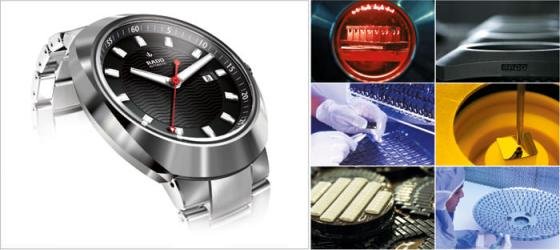 D-STAR by Rado
D-STAR by Rado
Grand manoeuvres
In regard to conquering new territories, one group dominated the ‘fusion-acquisition/ grand manoeurvres’ side of watchmaking. Of course, we are speaking of LVMH
. Present on several fronts, LVMH
seemed to pressure the management of BaselWorld with the placement of a Vuitton ship moored at the foot of the most beautiful hotel in the city, while at the same time avoiding to talk too much about the hostile bid for Hermès
. The size of its empire suddenly increased with the takeover of Bulgari.
With these brands, while waiting for the inevitable transitional audits and the future strategic decisions (notably concerning the increasingly crucial questions of industrial integration and movements), the general façade seemed to be business as usual.
We can already imagine the exchanges among the hierarchies of the brand—the Babins, Bivers, and Dufours all basking in their respective successes, TAG Heuer working at full capacity, Hublot moving in all directions, and Zenith in full renaissance. In passing, we might add that Zenith is now under the tutelage of Francesco Trapani who, with his personal shares in the brand, allowed LVMH to obtain 51 per cent, and thus was able to negotiate his desired role in the new organization. We also applaud Philippe Pascal, now appointed to other functions, who had up to then directed the group’s flagship of time. While waiting for things to necessarily change (Will Genta and Roth regain their autonomy? What will happen to the planned industrialization? And, in the domain of distribution, what new synergies will be produced in the boutiques?) Bulgari showed its new brood of Serpenti timekeepers (a model that is doing brilliantly, it seems,) in yellow or pink gold or in high jewellery pieces, while in the men’s category, the brand displayed its new Diagono Cal 303. Bulgari also showcased its amazing haut de gamme All Blacks (at 15,900 CHF). Tattooed with Maori symbols evoking strength, courage, and rebirth, the form of its black case recalls the face of a warrior. It is a lovely piece, beyond just simple marketing hype. Undoubtedly, it is the fruit of a veritable ‘acquisition of knowledge’ of the culture—or cult, we should say—of the Akka, a ritual of intimidation and exhibition of strength practiced notably by the All Blacks. A singular force emanates from this piece, which has been duly approved by the authorities of Akka. We would not really have thought of finding ‘spirituality’ at Bulgari (even less at LVMH
), and yet, at this small detour, it fell upon us without warning. At last.
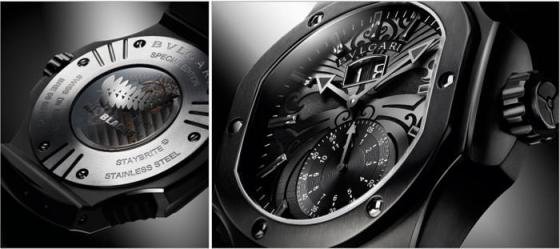 ALL BLACKS by Bulgari
ALL BLACKS by Bulgari
- BaselWorld 2011 – In search of the perfect watch – Part 1
- BaselWorld 2011 – In search of the perfect watch – Part 2
- BaselWorld 2011 – In search of the perfect watch – Part 3
Discover our other post Basel Articles on line: Perpetuals, pebbles and puzzles; Women’s watches galore and Incredible sports watches.
Source: Europa Star June - July 2011 Magazine Issue

